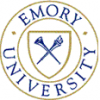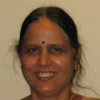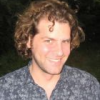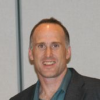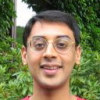News
| Professor Skip Garibaldi profiled on Emory's eScienceCommons | |
|---|---|
 | Published Date: 2010-03-22 Rock climber takes on surfer's theory The “exceptionally simple theory of everything,” proposed by a surfing physicist in 2007, does not hold water, says Emory mathematician Skip Garibaldi. Garibaldi, a rock climber in his spare time, did the math to disprove the theory, which involves a mysterious structure known as E8. The resulting paper, co-authored by physicist Jacques Distler of the University of Texas, will appear in an upcoming issue of Communications in Mathematical Physics. “The beautiful thing about math and physics is that it is not subjective,” Garibaldi says. “I wanted a peer-reviewed paper published, so that the scientific literature provides an accurate state of affairs, to help clear up confusion among the lay public on this topic.” In November of 2007, physicist Garret Lisi published an online paper entitled “An Exceptionally Simple Theory of Everything.” Lisi spent much of his time surfing in Hawaii, adding an alluring bit of color to the story surrounding the theory. Although his paper was not peer-reviewed, and Lisi himself told the Daily Telegraph that the theory was still in development and he gave a "low" likelihood to the prediction, the idea was widely reported in the media, under attention-grabbing headlines like “Surfer dude stuns physicists with theory of everything.” Garibaldi was among the skeptics when the theory hit the news. So was Distler, a particle physicist, who wrote about problems he saw with Lisi’s idea on his blog. Distler’s posting inspired Garibaldi to think about the issue more, eventually leading to their collaboration. Lisi’s paper centered on the elegant mathematical structure known as E8, which also appears in string theory. First identified in 1887, E8 has 248 dimensions and cannot be seen, or even drawn, in its complete form.E8-inspired graph. Credit: Wikimedia Commons, J. G. Moxness, an emulation of a hand-drawn original by Peter McMullen. The enigmatic E8 is the largest and most complicated of the five exceptional Lie groups, and contains four subgroups that are related to the four fundamental forces of nature: the electromagnetic force; the strong force (which binds quarks); the weak force (which controls radioactive decay); and the gravitational force. In a nutshell, Lisi proposed that E8 is the unifying force for all the forces of the universe. “That would be great if it were true, because I love E8,” Garibaldi says. “But the problem is, it doesn’t work as he described it in his paper.” As a leading expert on several of the exceptional Lie groups, Garibaldi felt an obligation to help set the record straight. “A lot of mystery surrounds the Lie groups, but the facts about them should not be distorted,” he says. “These are natural objects that are central to mathematics, so it’s important to have a correct understanding of them.” Using linear algebra and proving theorems to translate the physics into math, Garibaldi and Distler not only showed that the formulas proposed in Lisi’s paper do not work, they also demonstrated the flaws in a whole class of related theories. “You can think of E8 as a room, and the four subgroups related to the four fundamental forces of nature as furniture, let’s say chairs,” Garibaldi explains. “It’s pretty easy to see that the room is big enough that you can put all four of the chairs inside it. The problem with ‘the theory of everything’ is that the way it arranges the chairs in the room makes them non-functional.” He gives the example of one chair inverted and stacked atop another chair. “I’m tired of answering questions about the ‘theory of everything,’” Garibaldi says. “I’m glad that I will now be able to point to a peer-reviewed scientific article that clearly rebuts this theory. I feel that there are so many great stories in science, there’s no reason to puff up something that doesn’t work.” click here for the original article |
| Evans/Hall Speaker Announced! | |
|---|---|
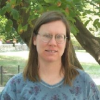 | Published Date: 2010-03-19 The Department of Mathematics and Computer Science is pleased to announce the 16th annual Evans/Hall Lecture and Award Ceremony on Tuesday, April 27 from 4-5pm in E208, Mathematics and Science Center, with reception following. Our speaker this year will be Elizabeth Housworth of Indiana University. The Evans/Hall Lecture honors graduate and undergraduate students in the department and recognizes outstanding student accomplishments via the Trevor Evans Award, Deborah Jackson Award, Marshall Hall Award, and Departmental Awards. |
| Mathematics Faculty of Distinction | |
|---|---|
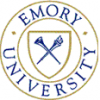 | Published Date: 2009-12-01 Emory University intends to make two or more distinguished faculty appointments in Mathematics, under the newly launched Science Faculty Distinction program. This initiative, part of Emory’s strategic plan to enhance faculty excellence, aims to significantly strengthen the basic sciences and mathematics by recruiting a number of outstanding scholars in select disciplines. The first such hiring focus will be in areas related to Computational Number Theory, broadly defined, and will contribute to a transformative change in the department of Mathematics and Computer Science. A guiding principle is for the new faculty members to add significant new strengths while enhancing and bridging existing areas of scholarship within MathCS. New faculty will complement existing areas of excellence within the department, build key connections to the physical and natural sciences at Emory and link to closely related strategic endeavors such as the Computational and Life Sciences initiative. We invite nominations and applications from outstanding scholars who are internationally renowned scientific leaders within their fields. Candidates must have a PhD in a relevant discipline, a stellar record (and continued promise) of exemplary accomplishment in research, and a commitment to excellence in teaching. Appointments are subject to final funding approval, and are expected to be at the tenured Associate or Full Professor level. However, truly exceptional candidates at all levels will be considered. We invite queries both from individuals and from small teams of collaborating scholars who bring complementary strengths to the Science Distinction initiative. Women and underrepresented minorities are especially encouraged to apply. Applications consisting of a cover letter, CV, research and teaching statements, and three letters of recommendation directly from recommenders should be submitted via Mathjobs.org. Informal inquiries are also invited by email (n16@mathcs.emory.edu). Screening begins December 1, 2009 and will continue until all positions are filled. For additional information about the department and Emory’s strategic plan please see: http://www.mathcs.emory.edu/ and http://www.emory.edu/strategicplan/. Emory University is an Affirmative Action/Equal Opportunity Employer and welcomes applications from women and members of minority groups. |
| Professor James Taylor profiled on the eScienceCommons blog | |
|---|---|
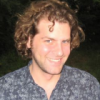 | Published Date: 2009-10-20 Bug splatter study is data driven The next time you take a road trip, think before you clean the bug splatter off your car. Those insect remains may actually be more interesting than your vacation photos. “It turns out that your car is a sampling device for understanding the biodiversity of all the places you’ve been,” says James Taylor, a computational biologist at Emory. Genome Research recently published a paper by Taylor and collaborators that applied advanced DNA sequencing techniques that are traditionally used on microbial samples to look at insect biodiversity. “We were curious whether these techniques would work for more complex organisms,” Taylor says. To collect genetic material for the study they used the bumper and windshield of a moving vehicle. Two samples were collected: on a drive from Pennsylvania to Connecticut, and on a trip from Maine to New Brunswick, Canada. “We found that there is a huge amount of insect diversity, but what was really surprising was to see the enormous amount of novel sequence,” Taylor says. “It’s indicative of how poorly we have sampled the whole tree of life in genome research so far. There’s an enormous amount of species out there.” Road tested Taylor is a co-developer of Galaxy, an open-source software system for analyzing genetic data. The Galaxy developers recently refined the system, creating the Galaxy metagenomic pipeline that allows a research team to integrate all of the data, analyses and workflows of a study, and then publish this material as a live online supplement. The bug splatter paper served as the first test of the metagenomic pipeline. “I believe that this study is one of the most transparent and reproducible bioinformatics papers ever,” Taylor says. “Anyone can go online, follow links and see every step of our analysis and exactly what parameters were used. And they can take our data and do their own analysis of other questions.” No computational experience is required to use the free Galaxy system, Taylor says. “All of science is becoming computationally intensive, so tools like this are needed to improve transparency.” DNA sequencing technology is getting cheaper, opening more doors for research by small investigators, and Taylor is focused on serving this niche. “Nowadays, you can have a crazy idea like studying bug splatter and without a lot of money or work, you can go out and do it just to see what’s there,” he says. |


